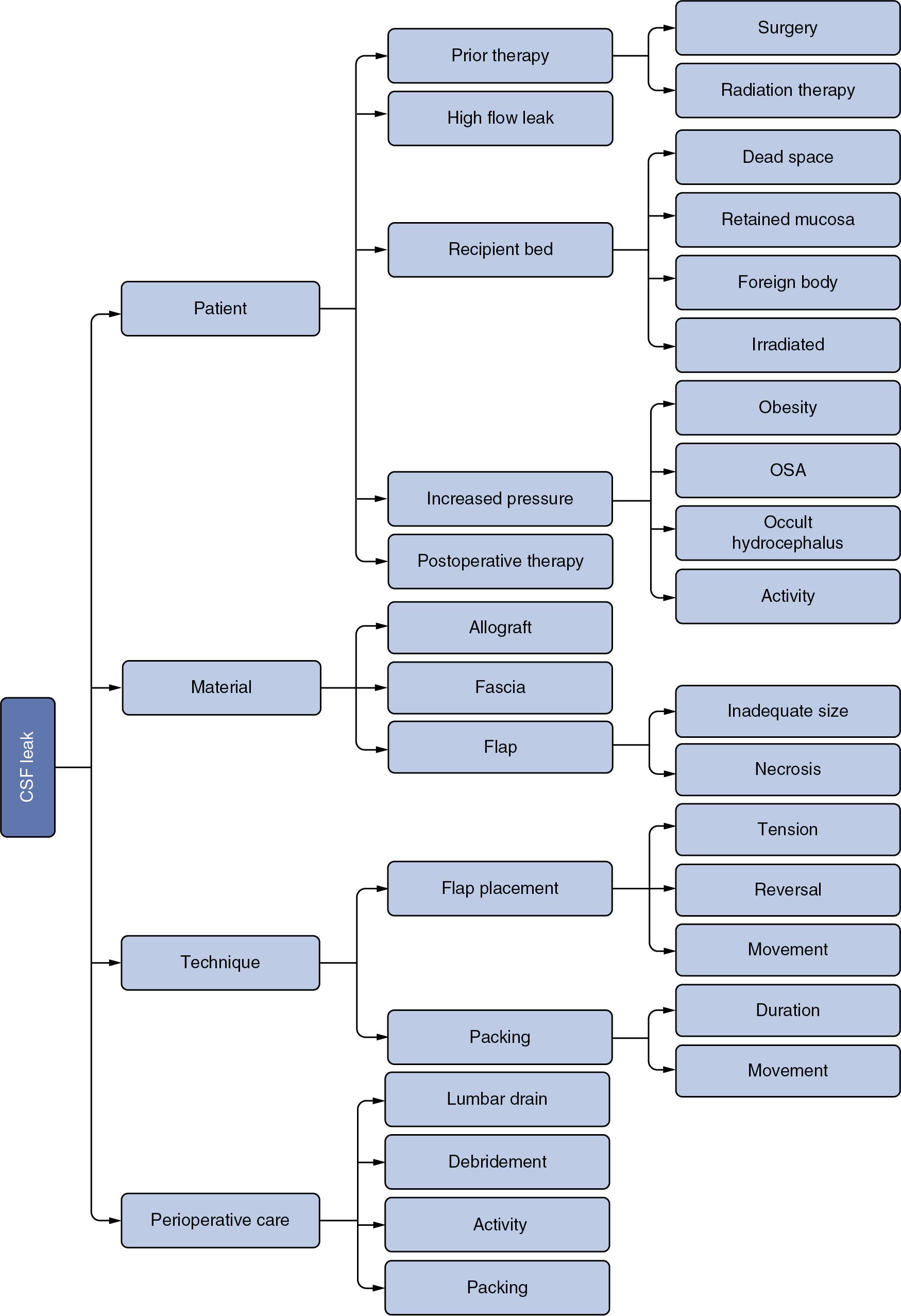Physical Address
304 North Cardinal St.
Dorchester Center, MA 02124
The three phases of any surgery are (1) surgical exposure (approach), (2) eradication of pathology, and (3) reconstruction. Although each phase may be performed sequentially by the same or different surgeons, they are interdependent, and the impact of each phase on the others needs to be considered as part of preoperative planning. One of the greatest challenges of endoscopic endonasal surgery (EES) of the skull base has been the reconstruction of large dural defects. Early published series were associated with unacceptably high postoperative cerebrospinal fluid (CSF) leak rates and were a source of great controversy. , Addressing this challenge required the development of new surgical techniques, application of new biomaterials, and a better understanding of the risk factors. Although the rate of postoperative CSF leaks has diminished significantly, it remains the most common major complication after EES and is the primary risk factor for surgical site infection and intracranial infection (meningitis, abscess).
In the early days of EES, reconstruction of dural defects consisted of multiple layers of nonvascularized tissue supported by nasal balloons or packing. Postoperative CSF leak rates were unacceptably high. The introduction of the vascularized nasoseptal flap (NSF) for reconstruction of skull base defects was a major innovation that dramatically decreased the rate of CSF leaks after EES. Systematic reviews of the literature have subsequently confirmed that reconstruction of dural defects using vascularized tissue has a higher rate of success, and this has become the new gold standard. , In recent years, surgeons have sought to better define the optimal reconstructive algorithm and the factors that influence decision making.
Reconstructive options after EES include both nonvascularized and vascularized tissues and can be organized in an ascending hierarchy from least complex to most complex and include autogenous and nonautogenous tissues, allogeneic and xenogeneic grafts, and alloplastic materials ( Table 28.1 ). Generally, autologous tissue is preferred when it is available and donor site morbidity is not an issue. There is little difference between allogeneic and xenogeneic grafts. Alloplastic materials such as bone cement and titanium plates are not necessary for reconstruction and pose additional risks of infection and migration.
| Nonvascularized Tissue | Local Vascularized Flap | Regional Vascularized Flap | Distant Vascularized Flap | Adjunctive Measures |
|---|---|---|---|---|
| Fascia | Nasoseptal flap | Pericranial flap | Free muscle flap | Acetazolamide |
| Fat | Lateral nasal wall flap | Temporoparietal fascial flap | Lumbar spinal drain | |
| Mucosa | Temporalis muscle transposition | External ventricular drain | ||
| Allograft |
Risk factors for postoperative CSF leak are myriad and include patient attributes, surgical approach, prior treatment, reconstructive materials, surgical technique, perioperative care, and processes. An example of a generic root cause analysis is shown in Fig. 28.1 . Risk factors differ by institution and patient population. A consensus statement with review of the literature identified obesity (body mass index [BMI]) as a major risk factor for postoperative CSF leak. Age and gender were not risk factors. Although revision surgery was not significant, the data did not consider the impact of prior surgery on reconstructive options and were limited to mostly pituitary surgery. Prior radiation therapy had mixed results. Surgical site rather than tumor histopathology affected outcomes with posterior fossa or clival defects having the highest risk of postoperative CSF leak.

Generally speaking, there is no right or best way to reconstruct the skull base after EES. Different methods share similar results, and what works well at one center may not work well elsewhere depending on the composition and experience of the surgical team. Although reconstructive options should be a regular part of preoperative planning, the reconstruction should not compromise the safety and efficacy of the surgery. More specifically, surgical exposure and safety of dissection should not be compromised to simplify the reconstruction or preserve reconstructive tissues. Every surgery should also have one or two backup plans for reconstruction. The extent of surgery may be altered based on intraoperative findings; reconstructive tissues may be unsuitable, involved by tumor or injured during dissection; or the patient may have elevated risk factors for a postoperative CSF leak.
Patients are stratified based on preoperative risk factors and surgical plans. Major stratification groups include (1) presence and degree of intraoperative CSF leak; (2) risk factors for elevated intracranial pressure; (3) extent of surgery, including dural resection and vascular exposure; (4) surgical approach; and (5) postoperative risk factors. Although standardization of reconstruction is desirable for each stratification group, there will always be exceptions based on the unique characteristics of each patient and operation.
Become a Clinical Tree membership for Full access and enjoy Unlimited articles
If you are a member. Log in here